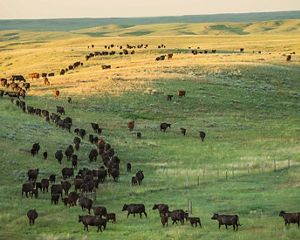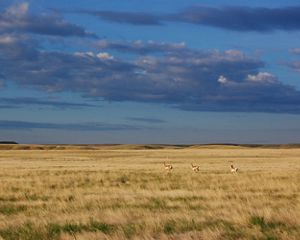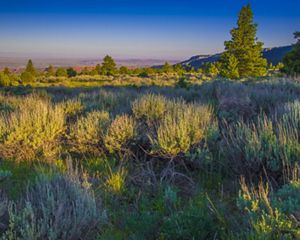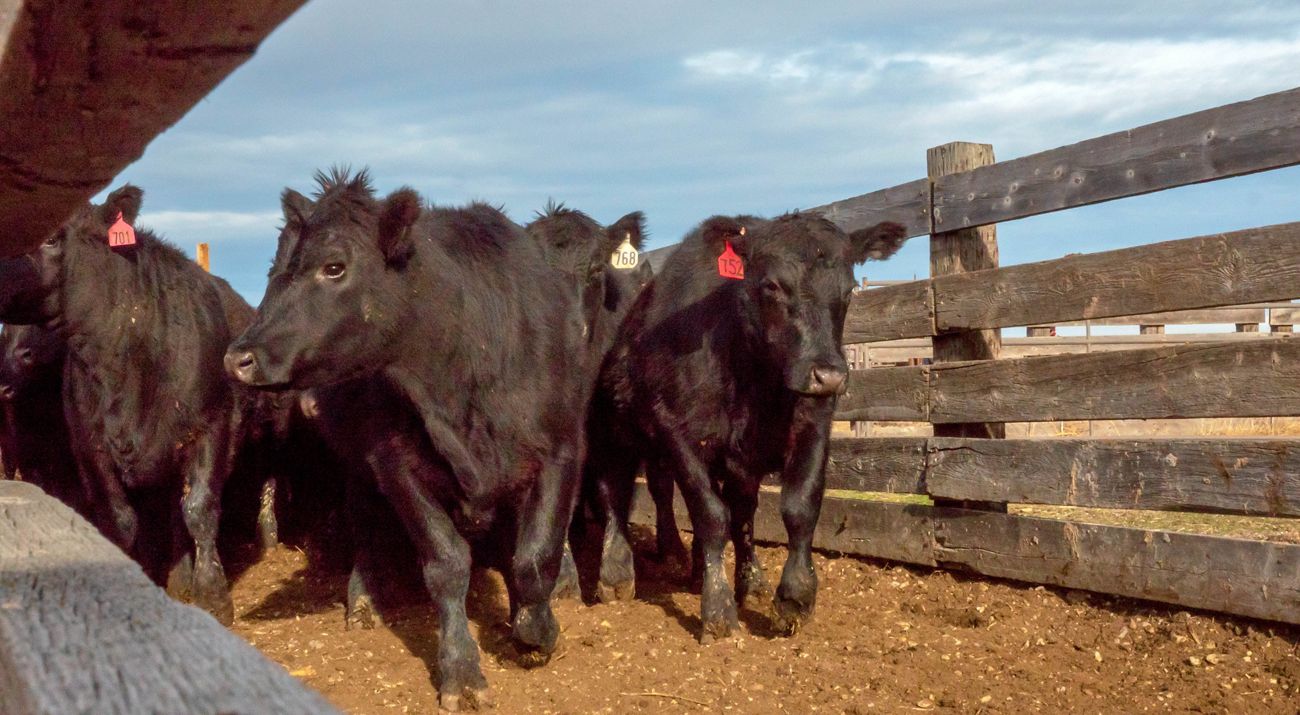
It’s the middle of December on the cold Northern Plains of Montana—a time of year that is usually dominated by short, chilly days and long evenings inside. Outside work is completed hurriedly, with a quick retreat into the warm confines of pickups and houses. But today dawns unusually warm, with the sounds of yipping dogs, lowing cattle, clanging gates, purring diesel engines, and raised voices carrying over the din.
On The Nature Conservancy’s Matador Ranch, it’s shipping day. This has nothing to do with the last frantic stretch of holiday shopping. It's the day when more than 1,000 cows are sorted, loaded, and shipped off the Matador Ranch, back to their home pastures. Shipping time is an annual, multi-day, labor- intensive endeavor that is usually completed in frigid temperatures and often howling winds, so this spring-like weather is a welcome change. The difference can be felt in the attitudes and general cheerfulness of the group of people that have gathered to haul cattle home for themselves or their friends and neighbors.
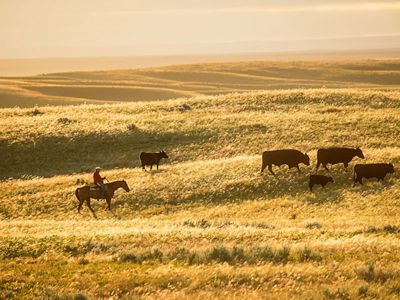
Matador Grassbank
These cows have spent the last nine months grazing on the Matador, in a carefully choreographed rotation around the ranch. It’s part of TNC’s flagship conservation tool in the Northern Great Plains, the Matador Grassbank. Local ranchers can graze their cattle on TNC land at discounted rates in exchange for putting conservation practices in place on their own land. This herd is one of three large, mixed-ownership herds that graze on the ranch; and they perform a vital service during their tenure here.
The goal is to create a mosaic of grassland structure that meets the needs of a variety of wildlife. For example, the diminutive mountain plover nests in shortly cropped grass or bare ground. On the opposite end of the spectrum, the Baird’s sparrow prefers taller grass, that has only been lightly grazed or left to rest for the season. The Matador grazing plan balances the needs of these different birds—many of whose numbers are in serious decline. At the same time, the Grassbank provides opportunities for ranchers to benefit from the leased forage.
What’s unique about the Grassbank is that it spreads conservation across hundreds of thousands of acres outside of the Matador’s fences. In 2018, through our Grassbank partnerships, TNC’s conservation footprint stretched over more than 354,000 acres.
By the Numbers
- Preventing 84,171 acres of native grassland from being converted to cropland – the major threat to this habitat.
- Conservation easements on Grassbank ranches that permanently protect 6,400 acres.
- 91,655 acres managed to benefit greater sage-grouse.
- 5,195 acres of prairie dog habitat protected.
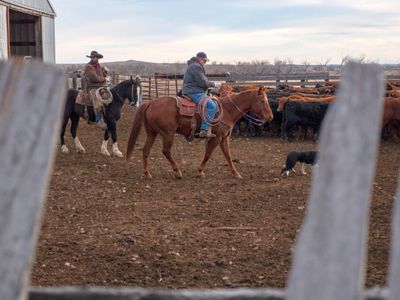
Working with Local Ranchers
These practices were also good for the people who make a living on the prairie.
The 25 ranch families participating in the Grassbank saved more than $70,000 in grazing fees, improved productivity on their own land and got a hand weathering an often unpredictable, but important industry.
Some of the greatest benefits of the Grassbank are less tangible, though no less impressive. That’s apparent when watching a group of nearly 25 people, living in a vast, remote and disconnected area, come together toward a common goal.
Yes, it’s hard work, but it’s always tackled by many hands and with a lighthearted attitude that speaks to the joy of being connected – of community! This is a rural area, where everyone’s name is known, but with such a large geography separating them, they have few opportunities to get together outside of annual brandings and chance meetings in town.
Grazing in common on the Matador, out of necessity, results in dozens of conversations, coordinated cattle moves, and group meetings to keep everyone in the loop. It has resulted in stronger connections between Grassbank members, and even new friendships. In such remote and often challenging country, the importance of community cannot be understated.
The long day of sorting cattle and loading them onto trucks has been interspersed with lots of conversation, some lamenting, plenty of predictions on everything from weather, to the cattle market, to the likely hood of the local ball team taking another state title, and not a small amount of cursing. Through it all though, there has been laughter and thankfulness; for the nice weather, for the sense of community, and for the promise of green grass in the spring.
